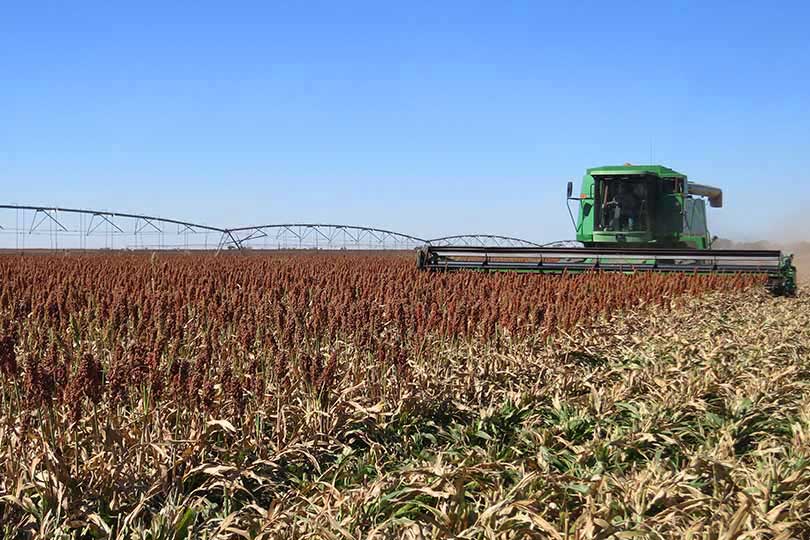By Justin Walker
Communications Specialist
It’s been a difficult year for Texas corn and sorghum growers, as nature and market conditions worked against many, according to Texas A&M AgriLife Extension Service experts.
Yields were impacted by drought and high temperatures, while low prices, trade talks and all-time record yields in the Midwestern states created less-than-stellar market conditions, they said in an interview with AgriLife Today.
Both corn and sorghum acres were down in 2018 in large part to low grain prices, Dr. Ronnie Schnell, AgriLife Extension agronomist, said.
“Yields for dryland acres in most areas of the Coastal Bend, upper Gulf Coast, Central Texas to Dallas were worse than a typical year,” he said. “There were isolated fields that did well, but drought and high temperatures hit as plants were going into pollination and grain fill.”
About 40 percent of the state’s corn acres and 60 percent of the overall statewide crop are accounted for in the Texas High Plains, Schnell said.
Sorghum had a slightly better year than corn did, Schnell said, because it is more heat and drought tolerant. Sugarcane aphids were also managed well, which helped.
A majority of the High Plains’ grain fields were harvested before heavy rains prevented access, he said.
The market also didn’t help farmers this year, Dr. Mark Welch, Extension economist, said.
Dryland fields had lower yields and a higher cost of irrigation, which negatively effects the bottom line, and market conditions are expected to worsen this season’s results.
“It was a tough, tough season for grain production,” Welch said.
Ongoing trade negotiations with China had already impacted sorghum prices, Welch added.
“Up to 80 percent of all sorghum exports go to China, so that number went to zero for now,” he said. “As exports dropped off, other sectors came up, such as sorghum for food production, seed and industrial use, but again due to lower prices.”
Trade talks did not affect corn, Welch said, but poor market conditions still exist for the crop.
“Texas corn producers took a real hit as they dealt with seasonal price dips and uncertainty in (the North American Free Trade Agreement), which was compounded by all-time record grain production in the Midwest,” Welch said. “It’s unclear what that production will mean, but it won’t help prices.”
A revamped trade agreement between the United States, Mexico and Canada looks promising for Texas grain growers, he said, but the possibility for a good soil moisture profile next spring has been the big story.
“There hasn’t been much good news for grain producers this season,” he said. “But the rain we’ve been receiving is encouraging.”

